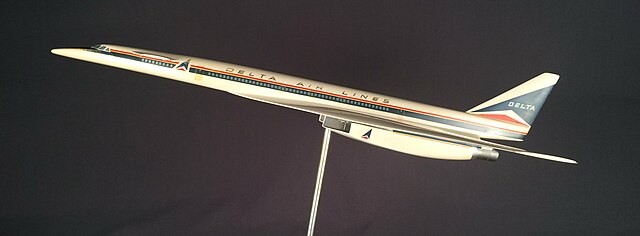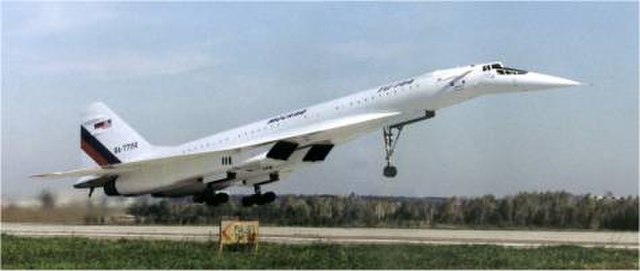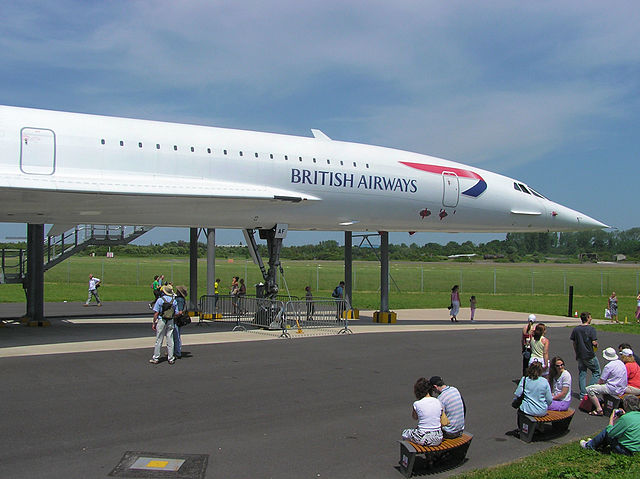The Boeing 2707 was an American supersonic passenger airliner project during the 1960s. After winning a competition for a government-funded contract to build an American supersonic airliner, Boeing began development at its facilities in Seattle, Washington. The design emerged as a large aircraft with seating for 250 to 300 passengers and cruise speeds of approximately Mach 3. It was intended to be much larger and faster than competing supersonic transport (SST) designs such as Concorde.
Boeing 2707 mockup at the Hiller Aviation Museum
The NAC-60 was North American's entry. It retains a number of features from the B-70 it was based on, notably the high-mounted canard behind the cockpit area, and details of the engine area under the rear fuselage.
Model of Boeing SST
A supersonic transport (SST) or a supersonic airliner is a civilian supersonic aircraft designed to transport passengers at speeds greater than the speed of sound. To date, the only SSTs to see regular service have been Concorde and the Tupolev Tu-144. The last passenger flight of the Tu-144 was in June 1978 and it was last flown in 1999 by NASA. Concorde's last commercial flight was in October 2003, with a November 26, 2003 ferry flight being its last airborne operation. Following the permanent cessation of flying by Concorde, there are no remaining SSTs in commercial service. Several companies have each proposed a supersonic business jet, which may bring supersonic transport back again.
The Concorde supersonic transport had an ogival delta wing, a slender fuselage and four underslung Rolls-Royce/Snecma Olympus 593 engines.
The Tupolev Tu-144 was the first SST to enter service and the first to leave it. Only 55 passenger flights were carried out before service ended due to safety concerns. A small number of cargo and test flights were also carried out after its retirement.
Concorde landing
British Airways Concorde at Filton Aerodrome, Bristol, England shows the slender fuselage necessary for supersonic flight.







